|
"Hey, I’m in Nirvana!" We all talk like this when we feel good. But what is it like to actually attain Nirvana, otherwise known as moksha or Self-realisation? How does the world appear to such an exalted human being? Does one acquire supernatural powers?
There are few people in India more qualified to answer such questions than SWAMI CHIDANANDA, the successor of the illustrious Swami Sivananda. Swami Chidananda is a soft-spoken, kindly man with sparkling eyes. He is deeply revered by hundreds of thousands of people in India and around the world, who recognise his saintliness, selfless service and great humility.
Q. Vedanta philosophy clearly states that the goal of life is to attain the state of Self-realisation. What is this state and why is this the goal of life?
The Vedic rishis found that everything in the world that blooms is also subject to ultimate decay and dissolution. So they wondered—are we, human beings, endowed with intelligence just to live a brief life span and then pass away? They reasoned that life cannot be devoid of some higher purpose, especially when we are the only species of living beings who have the ability to think and reflect. After generations of investigations and after having raised their consciousness to a very subtle level, they came to the Truth through direct experience. They declared that beneath this mortal body seen by the world of man is an immortal spirit unseen by the world of man. And that Eternal in the non-eternal body, that Imperishable in the perishable body is actually part of a vast, infinite, eternal, beginningless, endless, cosmic Spirit. Timeless, beginningless and endless. It exists. It does not exist as an inert piece. It is Consciousness. Very much aware that it exists. It knows—I exist. So it is conscious existence. Existence is Sat, Consciousness is Chit. So it is Sat Chit. And in that state of pure Sat chit (Existence-Consciousness) many are the imperfect, negative experiences man is subject to once he is born in this mortal world—heat and cold, pleasure and pain, loss and gain, honour and dishonour. All these things assail man. But all these travails that man is subject to in this mortal world have no access to that lofty, sublime, transcendental realm, where abides only peace and bliss. There is Ananda in that Sat Chit. So it is Sat Chit Ananda. That is the nearest way you could define or describe that state of eternal Existence, which is also referred to as Brahman. And to realise and enter this state is called Self-realisation. Self-realisation is the goal of life because in that state there are no sorrows. Once you discover that you are the infinite, imperishable, eternal reality—you are liberated from all sorrow. In that state, there is only pure and permanent bliss and joy. Isn’t that the goal of each and every one of us? Q. But there is joy in this mortal world, too? Yes, but it is neither pure nor permanent. If a thing is capable of giving you a pleasurable sensation, that same thing is capable of giving you a painful sensation also. A man marries—he’s is in seventh heaven. Then if she runs off with someone else, or she dies, then he plunges into sorrow. This happens because the world is imperfect and man is imperfect. In one sloka in the Gita, the advice is that pleasure is the womb of pain. In seeking pleasure, you have already created your pain. Thus, pleasure in worldly objects and people is neither pure nor permanent. If you want real, continuous happiness that does not change or end—then rise above petty desires and seek the ultimate Reality. There is supreme Bliss, supreme satisfaction in it—an indescribable joy and peace. So make use of this life. It is a golden opportunity. While fulfilling your duties here, be a seeker of Truth, seeker of Brahman. Seek Self-realisation. In the word, ‘Self-realisation’, ‘Self does not mean your little self. It means your supreme Self. This is why Self is written with a big ‘S’. Know your real Self. Your mortal body is only a vehicle given to you to function upon this earth. But you are distinct from it. You are an immortal part of divinity. And when that is realised, one realises that I am aware, one with that limitless ocean of Sat-chit-ananda. I’m a little wave, but I’m part of the ocean. There’s no difference between the wave and the ocean. The wave may appear separate because it has a size and a form. But that is momentary and then it goes back into the ocean. From the ocean it arises, for a moment it exists, and then it goes back into the ocean.
Q. How does the world appear to such a Self-realised person? The world appears just as it is. But he realises that the fabric of the world is not what he thought it was before. He realises that it is nothing but the Brahman principle.
Q. And how does his own body and mind appear to him? Same thing. He sees it as part of Brahman. He is completely objective.
Q. Is Self-realisation within the reach of every human being? It is birthright of every human being. Because he has been born as a human being. It is not within the reach of any other creature in creation. The moment you reach the status of a human being, the goal of Self-realisation becomes open.
Q. At any given time, roughly how many Self-realised people do you think there are in the world? It’s impossible to say.
Q. Roughly? (Laughs) You may be a realised person, I do not know—because they don’t grow horns and spread wings! Or they don’t come down and say: "Oyee, I’m a realised person. .....!"
Q. But what would you estimate? Would they be in three figures or four figures or five figures.....? You see, three figures could be 999! (Laughs) You see! Similarly. So they are between three and four figures in the world. And a great proportion are in India. Doubtless. Because that is the quest of India.
Q. Would you say that more than half of them are from India? Yes, yes, yes. No doubt about it. I’ll put it that 60% are from India. This is because people from other cultures don’t have this as their supreme goal.
Q. Since a Self-realised person is one with the Infinite and eternal, does he have supernatural powers? You see, from your relative point of view, these powers are something special, something very fascinating. But from the Self-realised person’s point of view, they mean nothing. They are a natural part of him. I have got five fingers. I don’t crow about it—"I’ve got five fingers! I’ve got five fingers!" These supernatural powers are as natural to the supreme being as having five fingers. Theoretically, of course, Self-realised people have all powers. There is nothing that they cannot do. But they are generally not interested in doing all these things because they know that the whole world is a myth, a dream. From myth, they have been awakened. So why would they be interested in doing anything in a dream world? You see, when a person has dreamt a number of dreams one night and woken up in the morning—what value has the dream got for him? Similarly, once the Self-realised person has woken up to the supreme Reality, this mortal world is a dream, a myth.
Q. But looking at it from our point of view—if a Self-realised person has all powers, why can’t he use those powers to solve all the problems in the world? Why should he solve all the problems in a world that does not exist in his state of Consciousness?
Q. No, but from the human being’s standpoint? But he is in that standpoint. You are referring him to a world to which he would say where is this world where you want me to solve the problems? Okay, if you oblige him to come to your state of consciousness and ask him this question, he will say that the world is God’s creation. It has been here thousands of years before I came here and he has been looking after the world in His own way and the world has been going on. And if I leave the scene tomorrow and go away, the world will continue to go on. My being there or not being there will not even be noticed. See, if somebody gets diarrhoea the doctor says, "I ‘won’t give you any medicine because some inedible things have gone into your intestines and so nature is flushing your system clean. So let us not come in the way of nature. Just eat light things and don’t come back to a normal diet until your system has come back to its normal state." You see, the point is that you see things in a fragmentary, segmented way—but He sees the whole thing.
Q. Can a Self-realised person change another person’s destiny? He can mitigate another’s destiny. But he will not change it because that destiny has been ordained by God and the Self-realised person has no interest in contradicting God. He would rather try to be in harmony with God.
Q. How does he mitigate another person’s destiny? What is this power to mitigate? Read the life of Shirdi Sai Baba. He had an ardent devotee who had completely surrendered at Shirdi Sai Baba’s feet. But due to some past karma, the devotee was destined to be executed by impalement with a spear-like object. But this man had completely transformed himself. So one day when this man went into the fields, a very sharp thorn went very deeply into his foot. He suffered terrible, agonising pain and became unconscious. Half of the thorn in fact broke inside and other people had to put a sharp instrument inside to remove the thorn. The man underwent terrible agony. But by going through this, he was saved from the impalement that was due to him. His destiny had been mitigated.
Q. How does one recognise a Self-realised person? When you are beside a Self-realised person—no matter how bothered, troubled or worried you are—you will, for the time being, experience peace. Your mind will be serene and it will be directed towards the person before whom you are sitting and not towards the other people who may also be sitting there.
Q. So in general, how do Self-realised people benefit the world? A lot. They are fragrance where there is bad. Vibrations of goodwill emanate from them because Self-realised people have nothing in their heart except that all should be happy, all should be free from suffering. Day after day, they wish the well-being of all living creatures. That is the only thing they have in them—they have no other desire. This thought and this feeling goes out in waves from them all over the world. And thoughts have power. Evil thoughts sent to someone can disturb the mind of the person to whom they are sent. In the same way, thoughts of cosmic love and peace have the effect of mitigating the sorrow, suffering and negative thought currents in the world.
Q. There is a stage referred to as the ‘dark night of the soul’, which a Sadhaka (spiritual seeker) goes through during his inward journey towards Self-realisation. What is this? John Bunyan has written a book called "Pilgrim’s Progress", where he traces the seeker’s path until he attains God. Along the way, there is a stage where the seeker falls into the quagmire of despondency. At another place, he is caught by despair. So he goes through despondency, despair, doubt and confusion. He feels he won’t attain it at all. He thinks his life has been a waste. St. John of the Cross has also talked about this stage.
Q. Do most Sadhakas go through this? Yes. Most people go through this.
Q. And is this despondency spiritually related or can it be to do with other things in life? Spiritually. All are connected with spiritual life.
Q. How much before Self-realisation does this happen? Only when one is mature and advanced in one’s Sadhana (spiritual practice), these things begin to happen. Otherwise a person is not worthy of going through all these various deep emotions. You don’t know all these things.
Q. When one eventually does attain Self-realisation—can one slip out of it? Once you get full Self-realisation, there is no coming out of it. You will always be in that state. There is no coming in and out.
Q. But isn’t there a stage where one slips in and out of that state until one gets established in it? There comes a time when the Sadhaka, in a state of very deep, intense, continuous meditation, gets this Atma jnana (Self-knowledge). The deep, intense, continuous meditation suddenly stops and one goes into a stage where there is no more meditation, one just is in a certain state. He is in Samadhi. The Sadhaka has reached there by dint of great perseverance and effort, reached this height of being. But he may not be able to remain in it for a long time. After sometime, he may come back. Then starts again. Again he may go into Samadhi—and come back. Then, from that stage onwards, he is no longer practicing meditation—he’s practising Samadhi. You get the difference? He’s practising samadhi. He’s practising to remain continuously abiding in that same state of Consciousness, into which he is currently going in and coming out. Eventually, he gets well established in that state. The state becomes natural to him both during meditation and in the time of normal activities. It becomes a spontaneous, natural state for him. This is called Sahaja-samadhi. ‘Sahaja’ means it becomes part of his natural, effortless, spontaneous being. Until then, he has to keep on trying. But once this stage is attained, it is Self-realisation.
Q. That is Self-realisation? That is Self-realisation. No more rebirths after that. No more slipping in and out of that state.
Q. So that means Self-realisation doesn’t happen in one specific moment? It can, in some cases. Sometimes people get illumination. Ramana Maharshi never did any Sadhana. One day suddenly, when he was around 16 or 17 years old, through no effort of his, suddenly he felt that he was not the body, that he was the deathless Self. Effort is necessary in the vast amount of cases. But there are a few such people to whom there has been this spontaneous Self-realisation. It has been explained that someone could have done all the effort in his previous life. He was almost ripe. But just before he could attain Self-realisation, his body’s Prarabdha was finished and he passed away. So when this birth happens, he takes up from where he left off in the previous life and there you are.
Q. So such a person, in his previous life, was already at a stage where he was perhaps practising Samadhi and was slipping in and out, but hadn’t quite reached Sahaja-samadhi? He was almost there. Maybe he was slipping in and out or maybe he was just about to get into that state for the first time.
Q. In one. of Swami Sivanandaji’s books, there is a mention of a void before Self-realisation. What is this void? You see, until the point where you attain Self-realisation, there is still a trace of the human personality—human personality identity consciousness. One still feels that I am so and so. Even though he says God, God, God, God—there is also a little bit of I with God. There is 95% divinity and 5% this I. And this I is a myth. You are actually a part and parcel of God. You are 100% divine. So this "I" has to go. As long as it is there, that Consciousness is not complete and perfect. Let me give you an analogy. A river flows, flows, flows, flows. At last, it approaches the sea. And then it enters into the sea. But even after having entered into the sea, till quite some distance, the water still tastes sweet. Because the river has not left its river-ness completely. It still retains its river-ness, although its two banks are finished. Bank-less, it is already in the sea. But after it goes further into the sea, a time comes when the water is no longer sweet. It is the salt water of the sea alone. That stage when the river is gone, but the vastness of the sea has not yet been attained, that interim period when it is neither the river nor the sea—that is the void. Let me give you another example. You come to a point where there is nothing but the edge of a precipice and yawning chasm. And the actual experience is on the other side of the chasm. Unless you leave this precipice, you cannot go to the other side. So there is a point where ultimately he takes the leap. When he takes the leap, he is lifted up into the air. But he has not yet landed there. So there is a point where he has left this precipice, but not yet landed on the other side. In between, where is he? Nowhere. That nowhere is the spiritual void. At that time, neither is the human ego there nor has the divine Consciousness come. At that time, they say there is a void. But, of course, in the spiritual context, the duration of the void may be a little longer.
Q. When he lands on the other side, is that Sahaja-samadhi or is he at a stage where he can still slip in and out? It is the ultimate state, the ultimate Samadhi. Until that stage there is still duality, a trace of duality. Once you are there, there is absolute non-duality. You are one with Brahman.
|
Categories
Tag Cloud

Swami Chidananda on Self-Realisation
Jan 24, 2024
Gallery
Post Comment
Your email address will not be published. Required fields are marked *
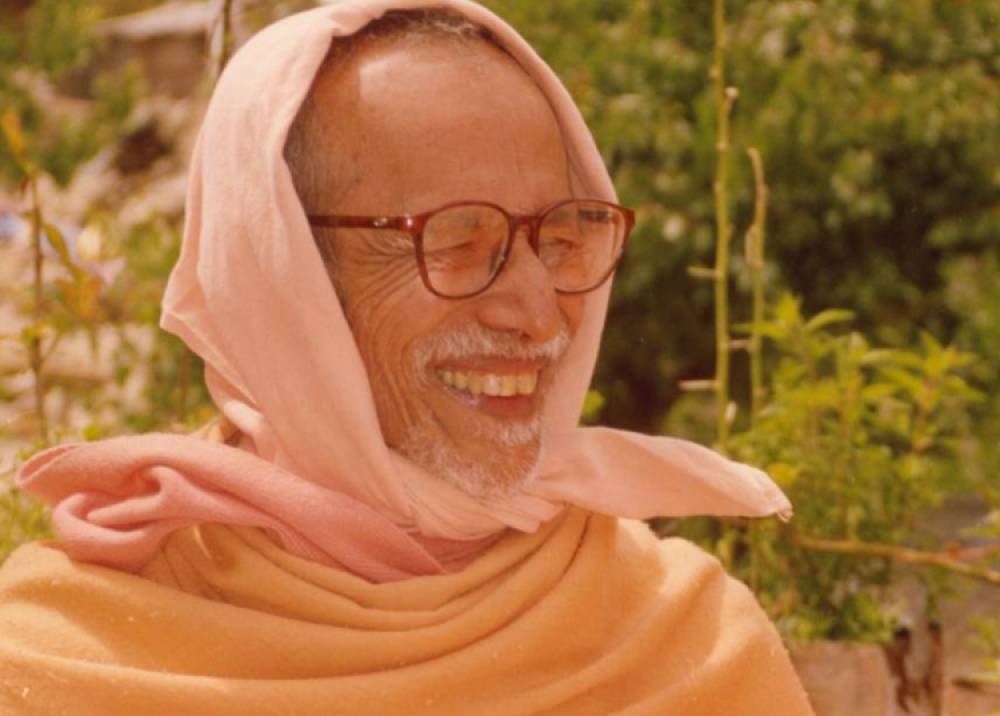
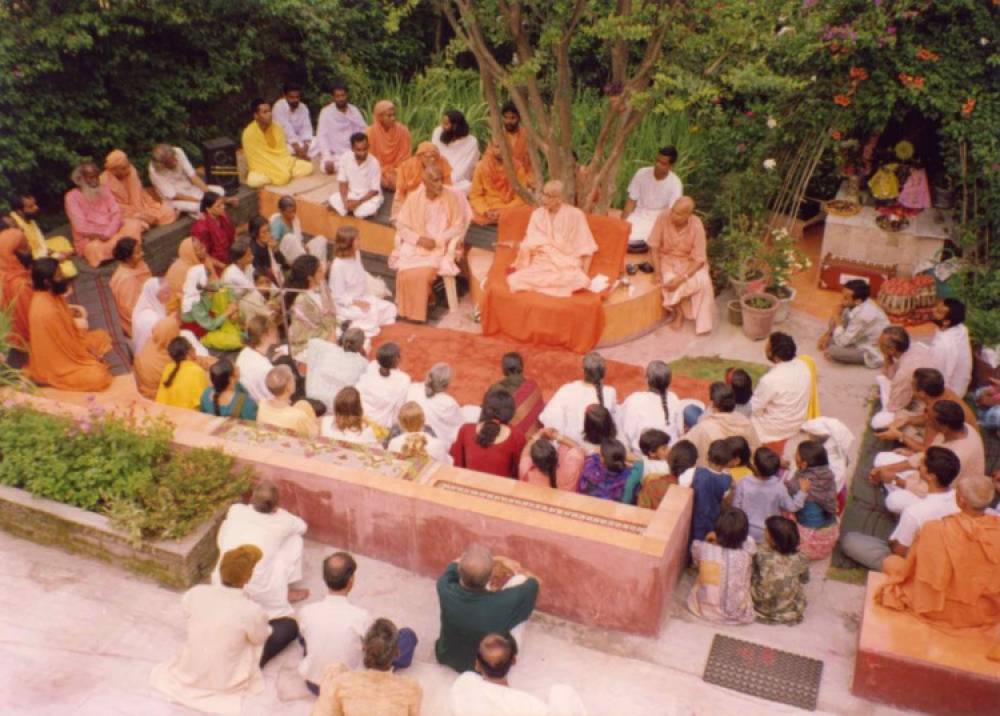

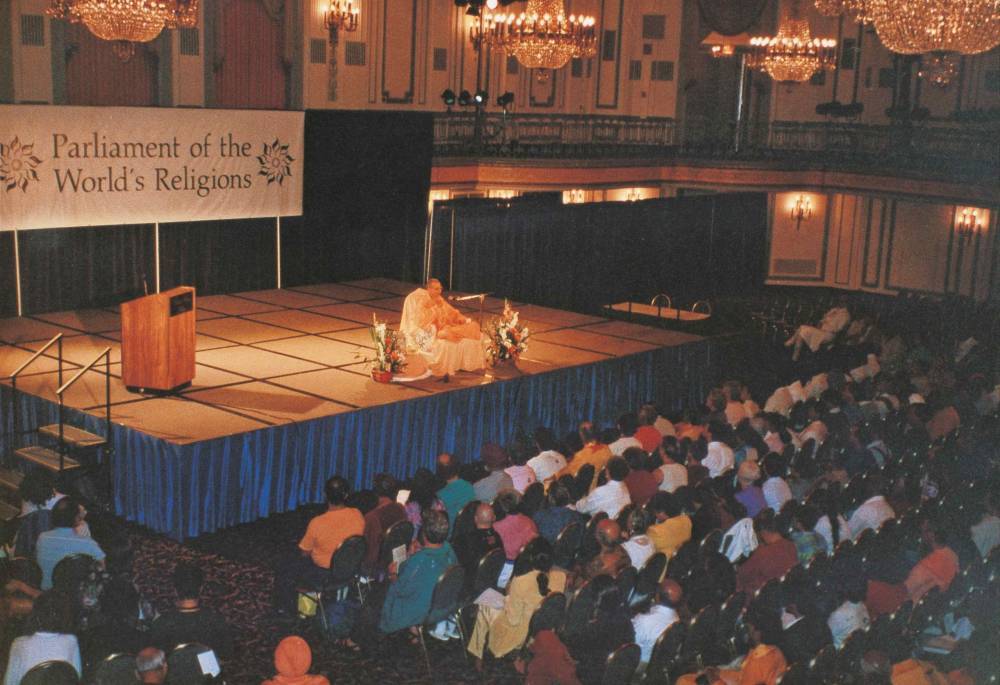
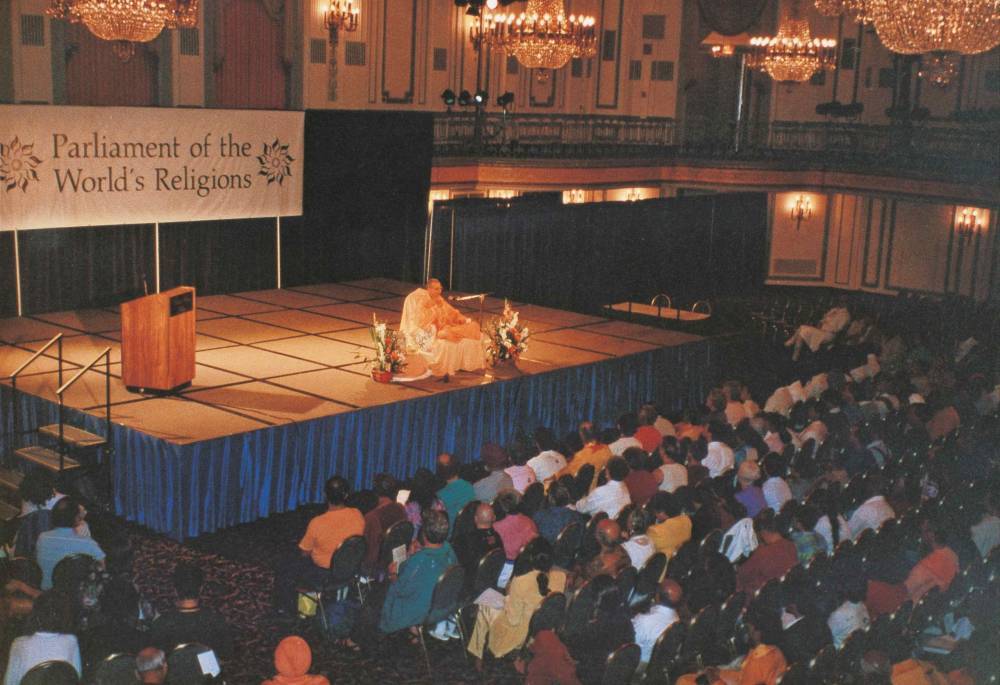
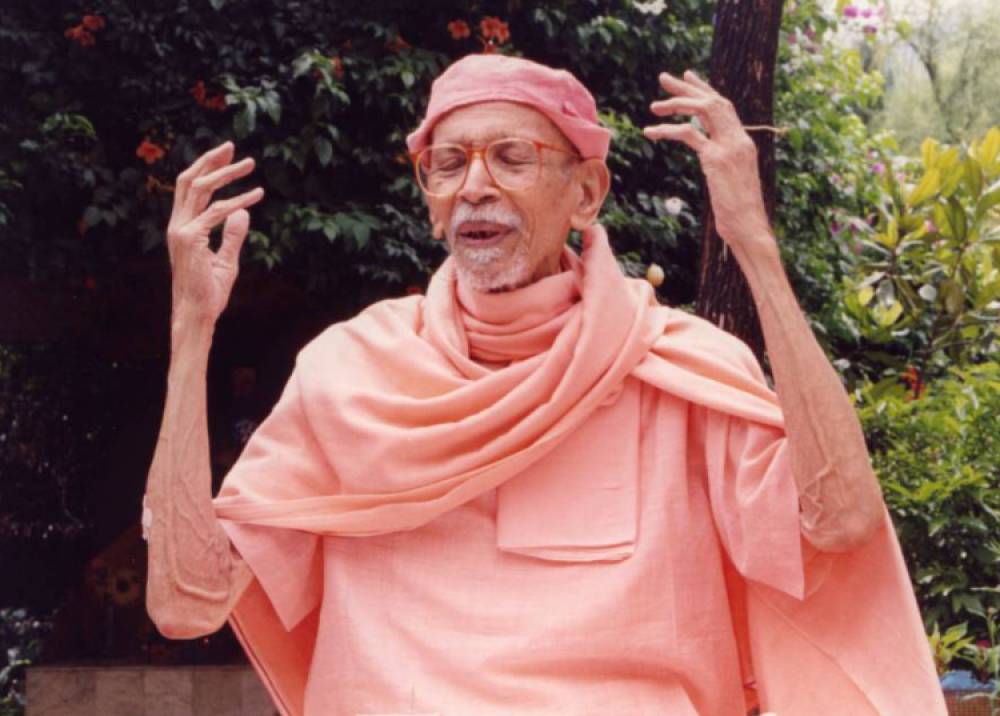

No Comments found. Be first to comment